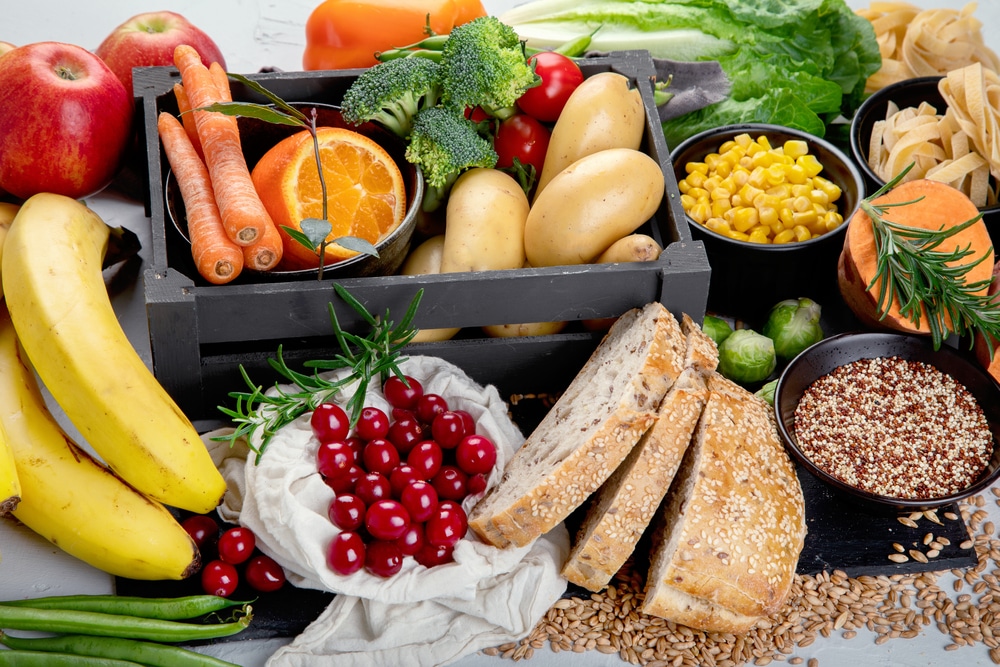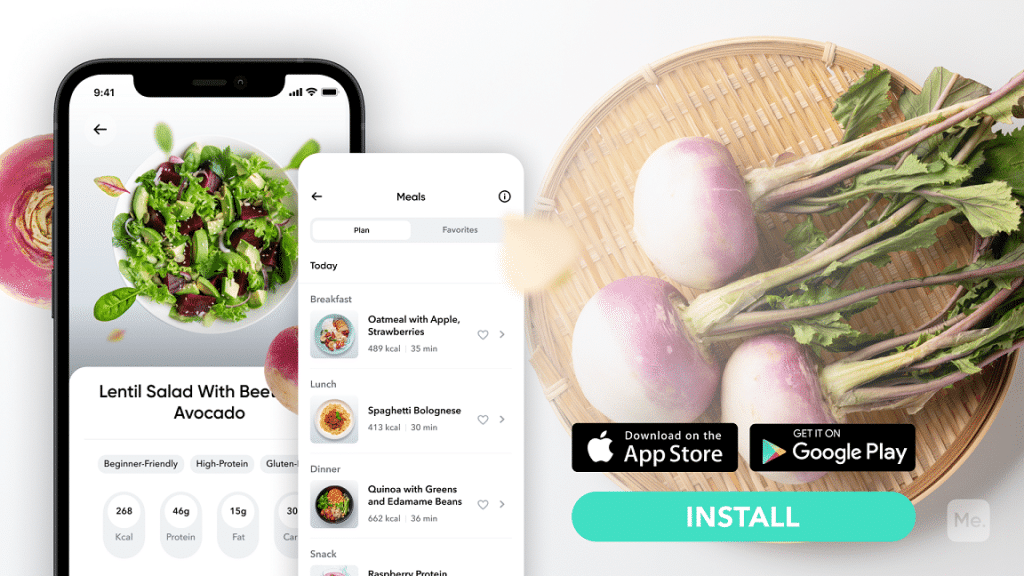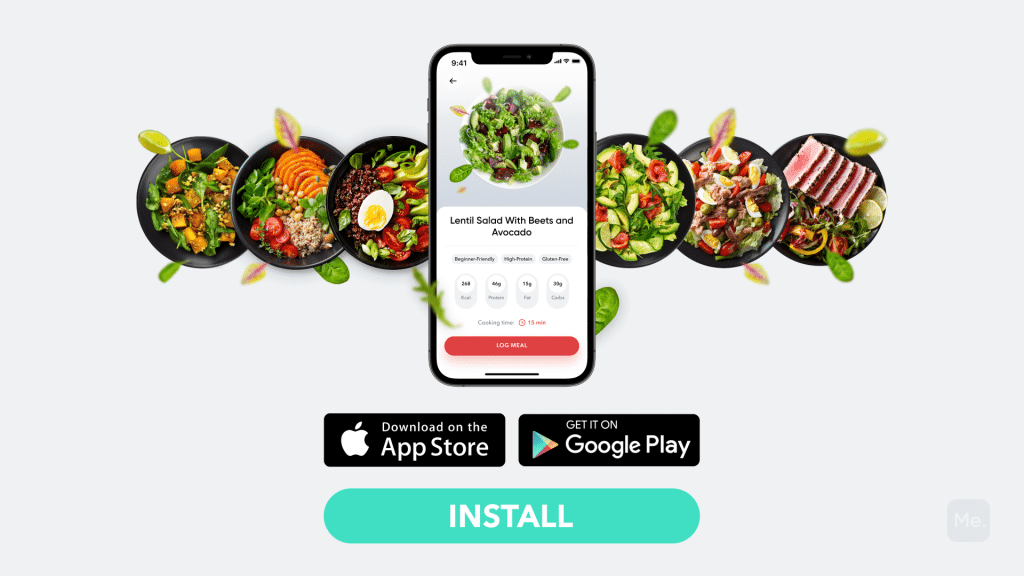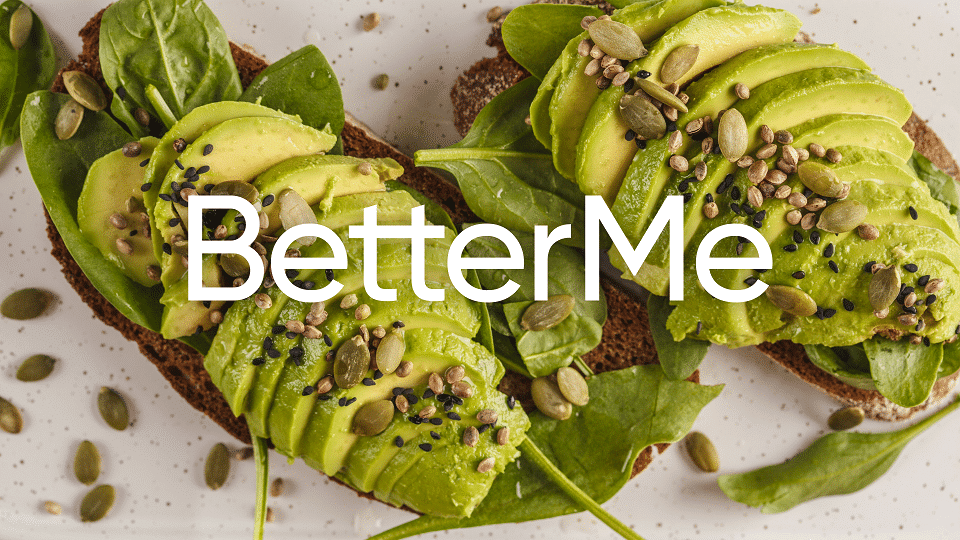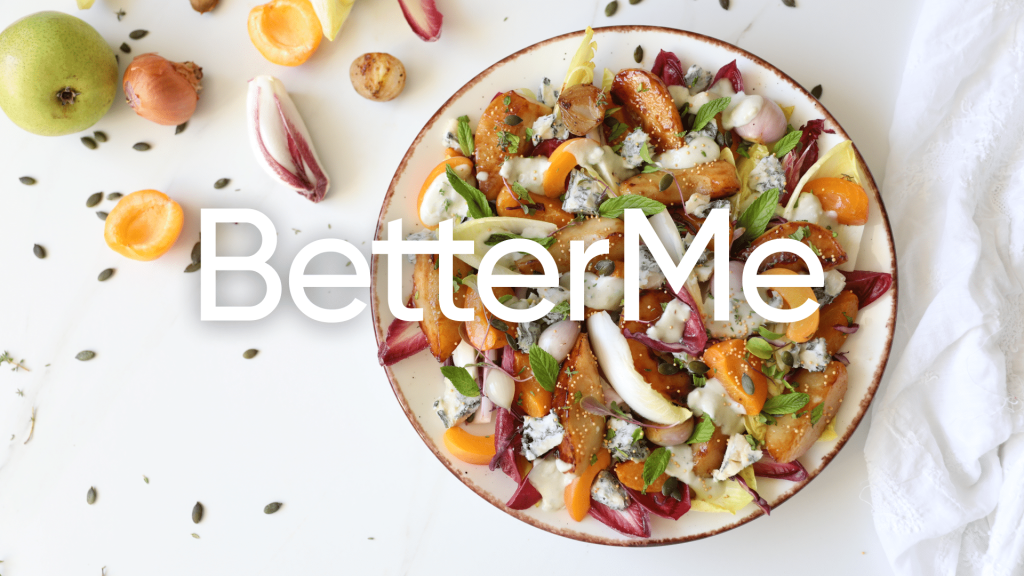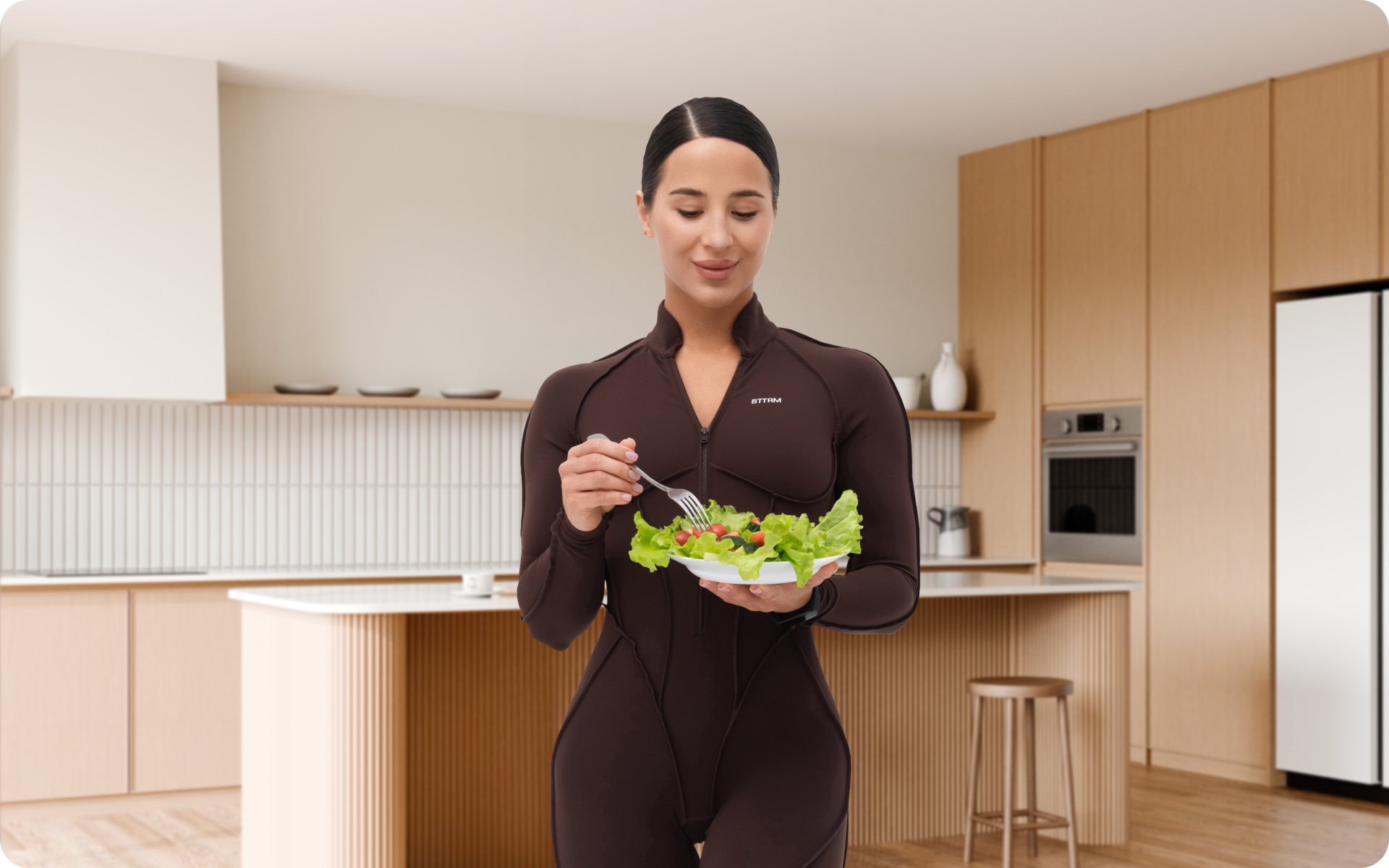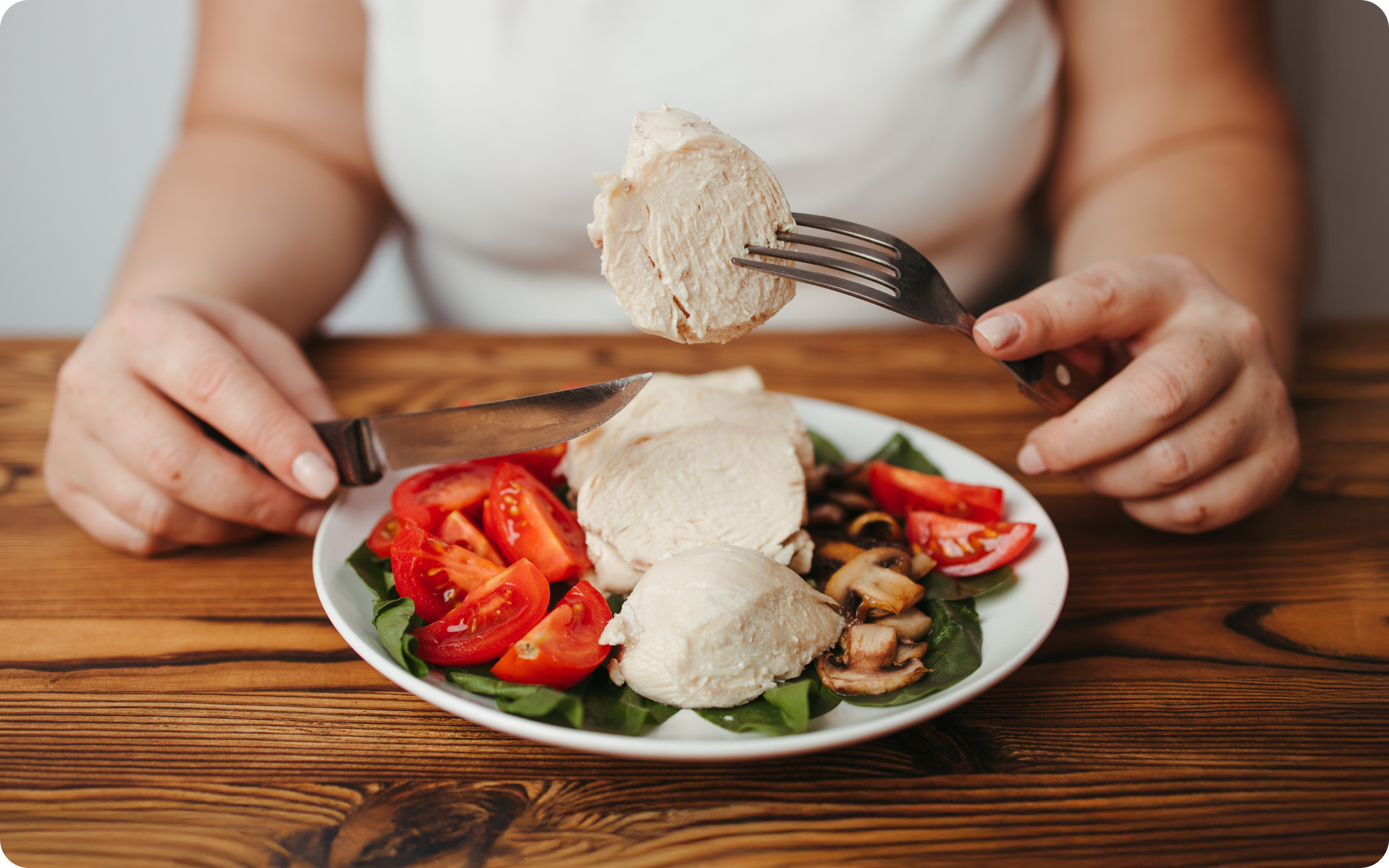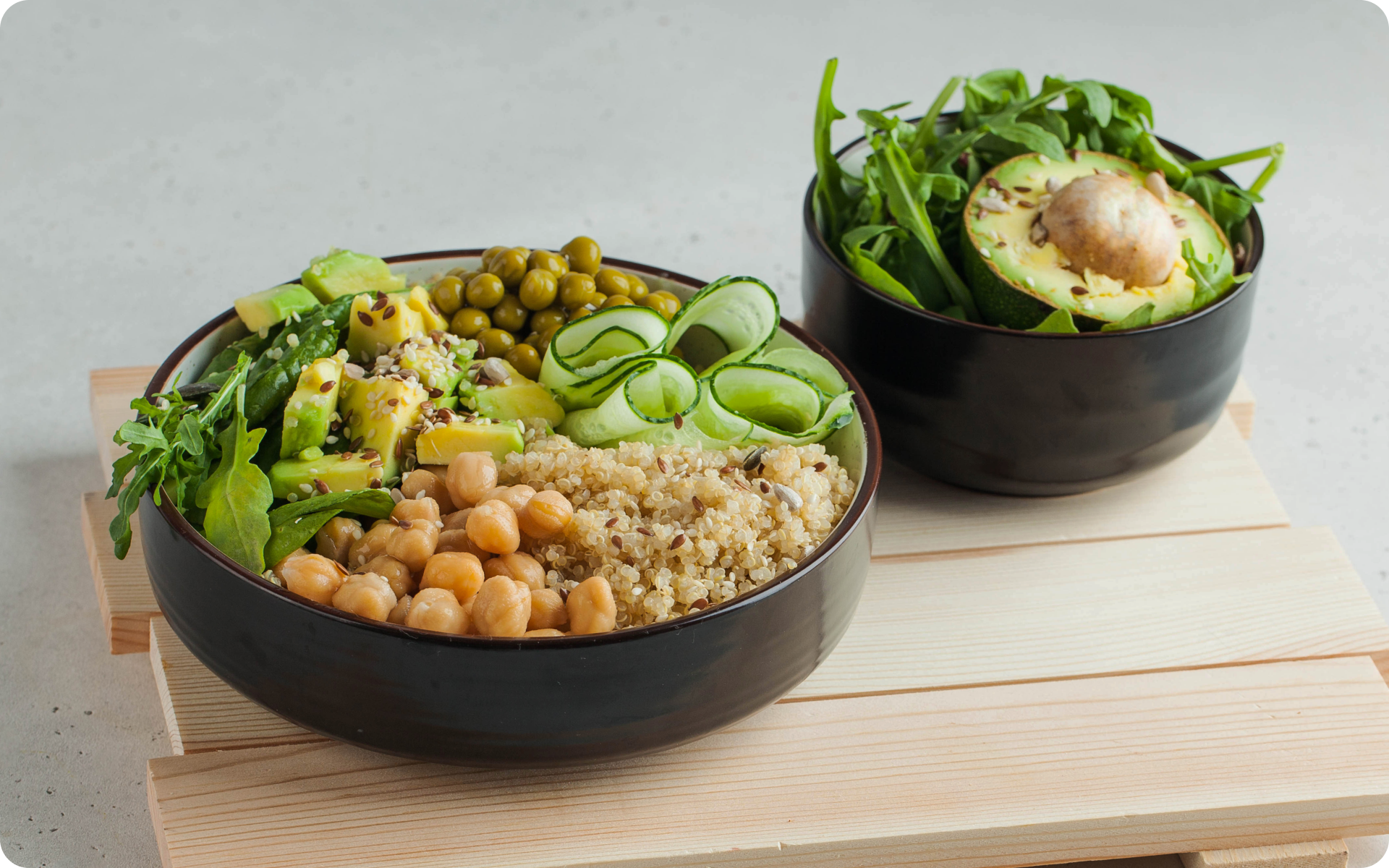Carbs have a bad rap in the fitness cycle—they’re often blamed for weight gain and declared “unhealthy.” But the truth is we need carbs to function. Carbs are our body’s preferred source of energy, and when we cut them out completely we can do more harm than good (12).
Women in the midst of high-intensity training or competition are especially at risk for problems associated with low-carb diets. While a certain amount of carbohydrate restriction may be helpful for fat loss in sedentary individuals, athletes need to be more mindful about their carb intake.
Cycling carbohydrates—or strategically planning your carb intake on different days—can be an effective way to support your training, minimize fat gain, and improve your overall health.
In this article we’ll discuss everything you need to know about carb cycling for women, including how it works, the benefits, and how to get started.
What Is Carb Cycling?
Carb cycling is a dieting strategy that involves alternating between periods of high and low carbohydrate intake. The basic idea is to consume more carbs on days when you’re training hard, and fewer carbs on days when you’re resting or doing lighter activity.
This approach is thought to be helpful for a few different reasons. First, it can help you better match your carb intake to your activity level. If you’re eating too many carbs on days when you’re not training, you’re more likely to store them as fat. But if you’re not eating enough carbs on days when you are training, you may not have enough energy to perform at your best. Carb cycling can help you find the right balance.
Second, carb cycling can help support your metabolism. When you eat carbs, your body’s insulin levels increase (13). Insulin is a hormone that helps store energy in the form of glycogen (a type of sugar) in your muscles and liver. But insulin can also promote fat storage when there is excess energy available (2).
Alternating between high and low-carb days can help keep your insulin levels and energy intake in physiologic balance, which may help you avoid storing too much body fat.
Finally, carb cycling can help make dieting a bit more bearable. Let’s face it: eating fewer carbs can be tough. If you’re constantly restricting yourself, you’re likely to eventually fall off the wagon.
But if you allow yourself higher carb days regularly you can still enjoy some of your favorite foods while also sticking to your diet. This can help make the process of dieting more sustainable in the long run.
Read More: Keto Yogurt: How To Make A Delicious And Healthy Low-Carb Yogurt Alternative
Should Women Carb Cycle?
Whether or not carb cycling is a good idea for you depends on your goals. Some women believe that their bodies tend to be more sensitive to carbohydrates than men’s bodies, so carb cycling may not be necessary for every woman who wants to lose weight.
That said, carb cycling can be helpful for women who are struggling to lose weight despite following a healthy diet and exercise routine. If you feel like you’re doing everything right but still not seeing results, or that you don’t have enough energy to exercise the way you want to, carb cycling might be an option worth exploring.
What Is A Good Carb Cycling Schedule?
There are a few different ways to carb cycle. The most common approach is to have one or two high carb days per week, followed by a few low carb days. This is sometimes called the “weekly cyclical ketogenic diet” (CKD).
Another approach is to have one high-carb day for every two low-carb days. This is often referred to as the “targeted ketogenic diet” (TKD).
Finally, some people choose to have a higher carb day every fourth day. This is called the “cyclical ketogenic diet” (CKD) or the “4-day cyclical ketogenic diet” (4CKD).
Which approach is best for you will likely depend on your lifestyle, goals and preferences. If you’re trying to lose weight, you may find it helpful to start with two high-carb days per week.
If you’re more interested in maximizing your performance in the gym, you may do better with the TKD or CKD approach.
If you wish to free yourself from all the extra pounds that have been weighting you down for way too long, start using the BetterMe app and overhaul your entire life!
How Do You Carb Cycle For Women?
To carb cycle, you must:
Differentiate Between Your Workout Days And Your Non-Workout Days
First things first: you need to be able to distinguish between your workout days and your non-workout days. This will help determine how many carbs you should eat each day.
On days when you’re working out, you’ll want to consume more carbs than on days when you’re not. This is because carbs are your body’s preferred source of fuel for exercise. They help you perform at your best and avoid fatigue (8).
On days when you’re not working out, you don’t need as many carbs. Eating fewer carbs on these days can be helpful. That’s because when you don’t have a workout to burn them off, any extra carbs you eat are more likely to be stored as fat (3).
Choose Your Carb Sources Carefully
Not all carbs are created equal. When carb cycling, you’ll want to focus on consuming complex carbs that are high in fiber and low on the glycemic index.
Complex carbs take longer to digest than simple carbs. This means they provide a slow and steady release of energy, as opposed to a quick burst followed by a crash (9).
Examples of complex carbs include:
- Fruit: apples, bananas, oranges, berries, etc.
- Vegetables: broccoli, spinach, kale, Brussels sprouts, etc.
- Beans and legumes: black beans, chickpeas, lentils, etc.
- Whole grains: oats, quinoa, brown rice, barley, etc.
Simple carbs, on the other hand, are digested quickly and can cause spikes and crashes in blood sugar and energy levels (9). These should be avoided when carb cycling.
Examples of simple carbs include:
- Sugar: candy, cookies, cake, syrup, etc.
- Potatoes: french fries, potato chips, etc.
- White flour products: bread, pasta, crackers, etc.
- Fruit juice: any juice that is not 100% fruit juice with no added sugar
Monitor Your Macronutrient Intake
When carb cycling, it’s important to pay attention to your overall macronutrient intake. This means tracking the grams of carbs, protein, and fat you’re eating each day. It’s more important to focus on the ratio of these nutrients than it is to hit a specific calorie target.
For example, on days when you’re eating more carbs you may need to cut back on fat a bit to make room. Likewise, on days when you’re eating fewer carbs, you may need to increase your fat and/or protein intake slightly to reach your desired macronutrient ratio.
A common macronutrient ratio for carb cycling is 60% carbs, 25% protein, and 15% fat on your high carb days. But again, this will vary depending on your goals and preferences.
Tracking your macronutrient intake can be done using a food diary or a nutrition tracking app like MyFitnessPal.
Read More: Keto Milk: Dairy Milk Is High In Carbs, So Here Are A Few Keto-Friendly Substitutes
Make Sure You’re Getting Enough Fiber
When carb cycling, it’s especially important to make sure you’re getting enough fiber. Fiber is a type of carbohydrate that your body can’t digest. It passes through your digestive system mostly intact, providing several health benefits (5).
Fiber is important for keeping you regular, lowering cholesterol levels, and stabilizing blood sugar levels. It can also help you feel fuller after eating, which can aid in weight loss (7).
Its digestive benefits are especially important when carb cycling. That’s because you want to avoid any digestive issues that might arise from consuming fewer carbs on some days. You don’t need to count fiber in your carb allotment for the day.
Fiber is found in plant-based foods like vegetables, fruits, beans, and whole grains. The recommended daily intake of fiber is 25 grams for women and 38 grams for men (10).
General Carb-Cycling Guidelines
No matter which approach you choose, there are a few basic guidelines to follow.
1. Make Sure You’re Getting eEnough Protein
Protein is essential for building and maintaining muscle mass, so it’s important to make sure you’re eating enough if you’re trying to improve your body composition (6). A good rule of thumb is to consume 0.5 – 0.7 grams of protein per pound of body weight. You may need a bit more if you do intense strength training exercise – talk to your dietitian for personalized recommendations.
2. Don’t Eliminate Carbs On Low-Carb Days
When you’re cutting back on carbs, it’s important to still get some from healthy sources like fruits, vegetables, and whole grains (14). This will help you make sure you’re getting the fiber, vitamins, and minerals you need.
3. Focus On Healthy Fats
On days when you’re eating fewer carbs, you’ll need to increase your fat intake to make up for the calories you’re missing. But that doesn’t mean you should load up on junk food. Instead, focus on getting healthy fats from sources like fatty fish, nuts, seeds, avocados, and olive oil (1).
Yanking yourself back in shape has never been so easy with our game-changing fitness app! Start transforming your life with BetterMe!
4. Drink Plenty Of Water
Water is essential for proper metabolism, so make sure you’re drinking enough on both high and low-carb days (16). A good rule of thumb is to consume half your body weight in ounces of water each day. You can talk to your doctor or dietitian for more personalized recommendations.
5. Avoid Ultra Processed Foods
Ultra processed foods are often high in unhealthy ingredients like added sugars, unhealthy fats, and sodium (15). They can also be low in important nutrients like fiber and vitamins. It’s best to avoid them as much as possible, no matter what kind of diet you’re following.
6. Fight The Keto Flu
The keto flu is a collection of symptoms that some people experience when they first start a very low-carb diet. These symptoms can include fatigue, brain fog, and cravings (4). If you do start to feel them coming on, there are a few things you can do to fight them off:
- Drink plenty of water
- Get enough electrolytes
- Increase your fat intake
- Get enough sleep
Talk to your doctor and consider increasing your carb intake if the symptoms persist.
7. Don’t Forget To Exercise
Exercise is an important part of any weight loss plan, so make sure you’re still getting your workouts in even on low-carb days. Lighter cardio and resistance training are both great options (11).
The Bottom Line
Carb cycling is an eating pattern that involves alternating between days of eating a low-carbohydrate diet and days of eating a high-carbohydrate diet.
If you’re interested in trying carb cycling, there are a few different approaches you can take. The most important thing is to make sure you’re getting enough protein and healthy fats, and that you’re avoiding ultra processed foods.
With carb cycling, as with any diet, it’s important to exercise regularly and stay well-hydrated. If you do, you’ll be on your way to achieving your goals in no time.
DISCLAIMER:
This article is intended for general informational purposes only and does not serve to address individual circumstances. It is not a substitute for professional advice or help and should not be relied on for making any kind of decision-making. Any action taken as a direct or indirect result of the information in this article is entirely at your own risk and is your sole responsibility.
BetterMe, its content staff, and its medical advisors accept no responsibility for inaccuracies, errors, misstatements, inconsistencies, or omissions and specifically disclaim any liability, loss or risk, personal, professional or otherwise, which may be incurred as a consequence, directly or indirectly, of the use and/or application of any content.
You should always seek the advice of your physician or other qualified health provider with any questions you may have regarding a medical condition or your specific situation. Never disregard professional medical advice or delay seeking it because of BetterMe content. If you suspect or think you may have a medical emergency, call your doctor.
SOURCES:
- A healthy approach to dietary fats: understanding the science and taking action to reduce consumer confusion (2017, biomedcentral.com)
- Biochemistry, Insulin Metabolic Effects (2021, ncbi.nlm.nih.gov)
- Carbohydrates (2014, academic.oup.com)
- Consumer Reports of “Keto Flu” Associated With the Ketogenic Diet (2020, frontiersin.org)
- Dietary fibre in foods: a review (2012, ncbi.nlm.nih.gov)
- Dietary Protein and Muscle Mass: Translating Science to Application and Health Benefit (2019, mdpi.com)
- Health benefits of dietary fiber (2009, academic.oup.com)
- High-Quality Carbohydrates and Physical Performance (2018, journals.lww.com)
- Physiology, Carbohydrates (2021, ncbi.nlm.nih.gov)
- Position of the American Dietetic Association: health implications of dietary fiber (2008, pubmed.ncbi.nlm.nih.gov)
- Role of Physical Activity for Weight Loss and Weight Maintenance (2017, diabetesjournals.org)
- Science and Politics of Nutrition: Dietary carbohydrates: role of quality and quantity in chronic disease (2018, ncbi.nlm.nih.gov)
- The Carbohydrate-Insulin Model of Obesity: Beyond ‘Calories In, Calories Out’ (2019, ncbi.nlm.nih.gov)
- The scientific basis for healthful carbohydrate profile (2017, tandfonline.com)
- Ultra-Processed Foods and Health Outcomes: A Narrative Review (2016, mdpi.com)
- Water Intake, Water Balance, and the Elusive Daily Water Requirement (2018, mdpi.com)
